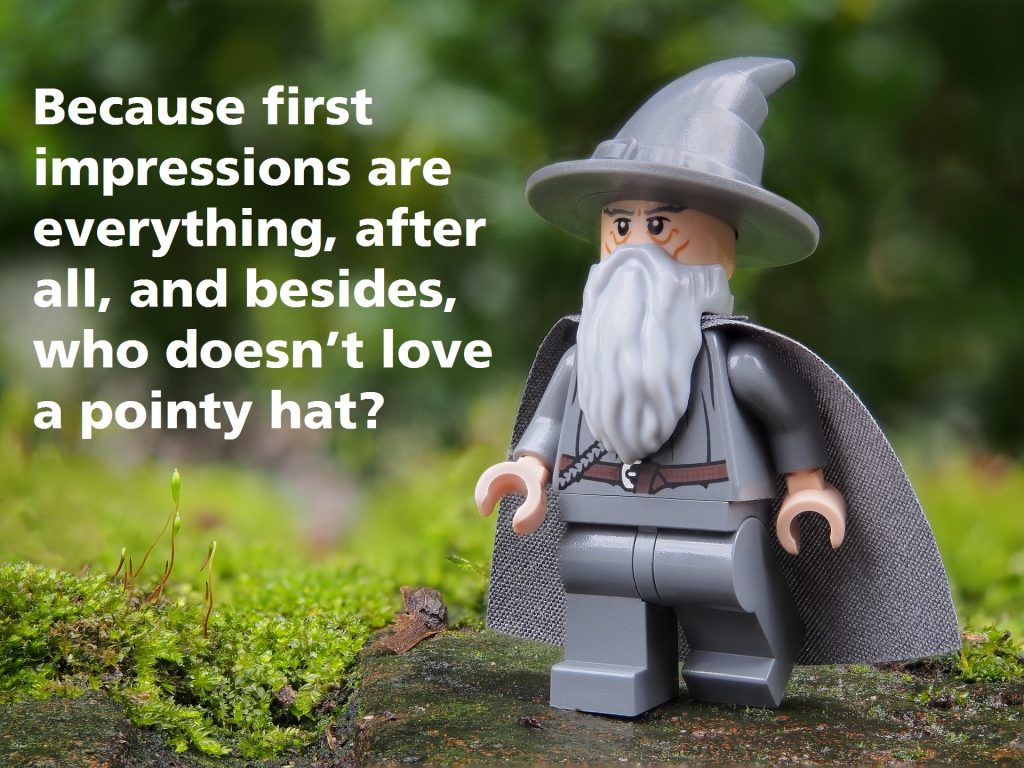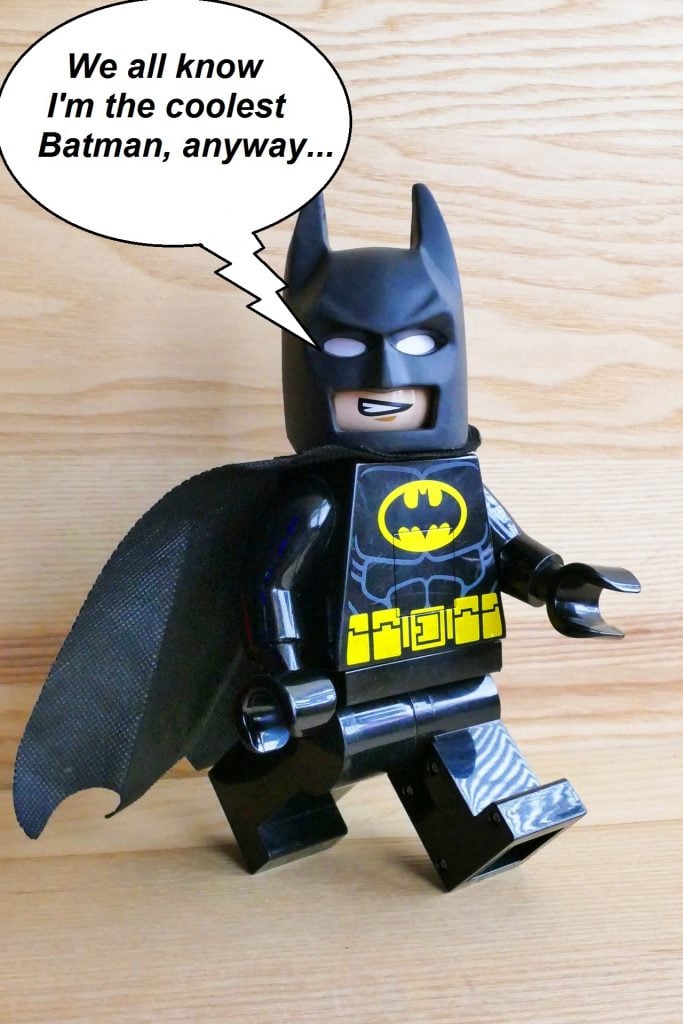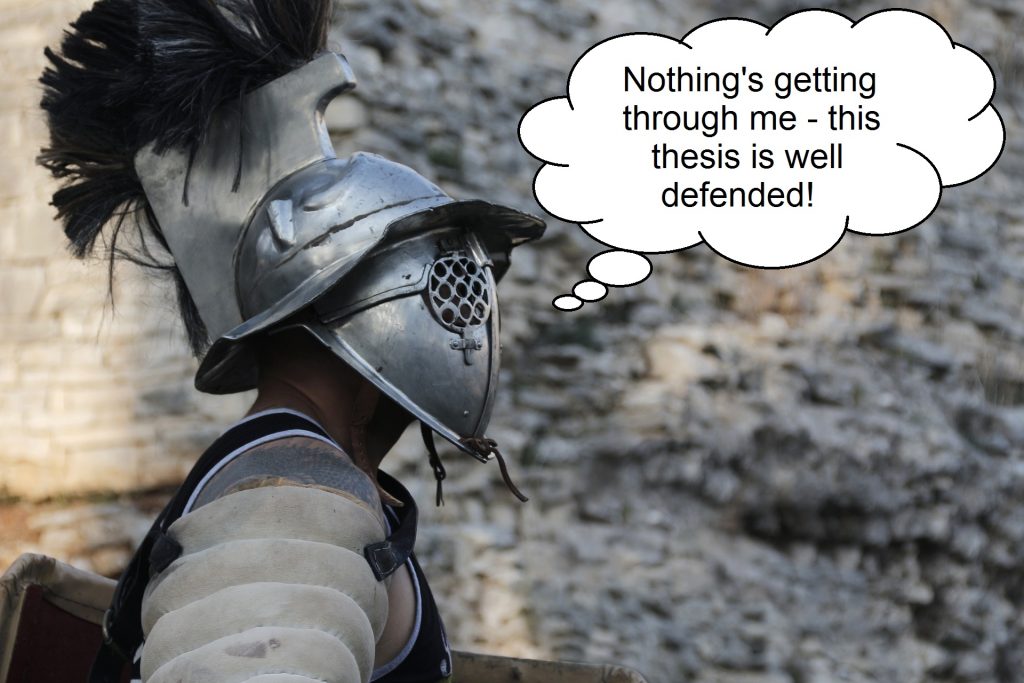Has this ever happened to you?
Professor: Where is your thesis statement?
Student: …
If so, don’t worry. You’re not the first person to struggle with writing a thesis statement, and you won’t be the last. This part of essay writing has vexed many college students, but luckily, I’m here to show you the ropes.
Almost every college essay you write will require a thesis in one form or another. A compare and contrast essay is no exception.
In this post, I’ll walk you through the finer points of how to write a compare and contrast thesis statement and offer some pro tips and resources for tackling that essay like a boss.
Everything’s an Argument
Every time you sit down to write an essay, try to think of it like an argument. Yes. An argument. Always.
This is important because your thesis is the main argument—the main point—you’re trying to make in your essay.
It’s a claim you make about your topic. Then you spend the rest of the essay backing up that claim with examples, reasoning, and sometimes professional sources that reinforce this claim.
A compare and contrast essay doesn’t always require you to cite sources, though. So let’s just focus on what you can do to write a great thesis and, thus, a great essay.
Think about it this way—if someone handed you this list…
 …you would probably wonder why the heck the person just did that. Similarly, your professor wants to see how well you can identify the relationship between two things.
…you would probably wonder why the heck the person just did that. Similarly, your professor wants to see how well you can identify the relationship between two things.
If you write a strong thesis, then you’ll show your professor that your compare and contrast essay has a purpose.
The Compare and Contrast Thesis Statement: Prework
If you’re going to write a strong thesis, you’ll want to make sure you know your approach before going in. Here are some pro tips to help you get started.
Pro tip #1:
Pick topics that interest you. It’s way easier to write about something you like or care about. Need some help with picking a topic? Check out this list of compare and contrast essay topics.
Pro tip #2:
Once you have your topics, try saying the following aloud (and maybe when you’re by yourself so that people don’t look at you funny in the campus library):
“(Topic 1) and (Topic 2) have a lot in common. They also have some differences.”
Then pretend someone just replied with, “So what?”
Repeat this exercise as you write the essay. It will help you reinforce your thesis and make sure that the point you’re making is meaningful.
Every time you start a new paragraph and write a topic sentence that reinforces your thesis, pretend that you’re being asked “so what?” again. Work on answering that question as you continue writing the paragraph.
Example
You write:
Though eccentric, both Gandalf and Dumbledore resemble kind-hearted grandfatherly figures when they first appear in the Lord of the Rings and Harry Potter series, respectively.
Your friend says:
So what?
You could reply:
Both characters are powerful wizards capable of terrible destruction, but showing them as kind old men humanizes and establishes them as protagonists that the reader can root for rather than fear.
Writing like this makes your essay more meaningful. Keep asking and answering “so what?” and you’ll write a strong essay that keeps reinforcing the thesis.
The Right Tool for the Job
There’s no “one-size-fits-all” thesis that works for any essay. Just like you wouldn’t use a screwdriver to hammer a nail, you’re not going to use an argumentative essay thesis for your compare and contrast essay.
If you’re going to write a solid compare and contrast thesis statement, then you’ll need to make sure you understand the anatomy of this essay. Let’s break down the compare and contrast format, bit by bit, and see how the thesis applies to each part.
Keep in mind that it’s a good idea to settle on your topics before moving forward. It’ll help you visualize how the following can be applied specifically to your topics.
1. Your approach
There are a few common approaches you could take when writing a compare and contrast essay.
Comparing/contrasting two things in the same category that are different somehow.
- Your house vs. a friend’s house
- Your favorite coffee shop vs. Starbucks
- Two types of cars
Comparing/contrasting two things that seem very different but actually have a lot in common.
- Bats and bears (both are mammals and hibernate during the winter)
- Pablo Picasso and Winston Churchill (both were painters)
Comparing/contrasting two things that appear the same but are actually very different.
- Tim Burton’s Batman vs. Christopher Nolan’s Batman
- Any movie and the book it’s based on
Applying the thesis:
Your thesis will be different depending on which approach you use. For example, if you were to compare/contrast two things that seem different, your thesis might look something like this:
While bats and bears appear to have little in common at first glance, they are remarkably similar.
And if you compared/contrasted two things that seem similar, your thesis might look like this:
While Batman is always depicted as the famous “Caped Crusader” in each Batman film, this character is wildly different depending on the film’s director.
Another pro tip:
To create a stronger thesis, be specific! For a compare and contrast essay, use several of your main points in your thesis to show the reader where your argument is going.
While bats and bears appear to have little in common at first glance, they are remarkably similar in their species classification and hibernation habits.
2. Your method
A compare and contrast essay is usually written using one of two methods.
Method #1: Subject by subject
This method is almost like writing two smaller essays in one. One half of the body paragraphs would cover the first subject, and the other half would cover the second subject.
Thesis:
While Batman is depicted as the “Caped Crusader” in either film series, Tim Burton’s Batman of the 1990s is far more comical, wittier, and less intimidating than Christopher Nolan’s early-2000s version.
To support this thesis, you would break down the things that are different between these two “subjects,” one at a time.
Tim Burton’s Batman (first half of body):
- Comical
- Witty and less intimidating
- The style reflects 1990s-era American culture.
Christopher Nolan’s Batman (second half of body):
- Serious
- Intimidating/fierce depiction
- The style reflects early 2000s-era American culture.
Method #2: Point by point
This method allows you to break down your topics by each point of similarity or difference. For each body paragraph, you support the thesis by writing about each topic at the same time.
Let’s use the same thesis from above and see how this method is organized in defending that compare and contrast thesis statement:
- The tone (comical vs. serious)
- Tim Burton’s Batman
- Christopher Nolan’s Batman
- The character (witty vs. intimidating)
- Tim Burton’s Batman
- Christopher Nolan’s Batman
- Time period effect on style
- Tim Burton’s Batman
- Christopher Nolan’s Batman
Either one of these methods can work for your compare and contrast essay. They’re both good structures to follow when trying to support your thesis.
And remember—the thesis is only as strong as the evidence that supports it, so choosing your method before you start writing is a good idea.
3. Know the process
By now, you’re probably starting to get a good idea of how you might put together this essay, but keep in mind that strong organization is key. It’s always smart to do the following steps before you even think of sitting down to type your first draft.
Brainstorm
I know, I know—this is just something your professor tells you to do. But it really works! Many students get frustrated when writing and switch topics halfway through because they didn’t work out what they really wanted during a good old-fashioned brainstorming sesh.
My advice: Grab a snack and a cup of coffee. Stare out the window. Let the ideas start flowing in, and think about what you might have to say about them. Jot down some notes. You’re off to a good start.
Need some help with brainstorming? Read 6 Prewriting Strategies to Get Your Essay Rolling.
Outline
Really? Another step? You bet! I’ve seen a lot of students get stuck by the second paragraph because they didn’t plan ahead. Trust me—outline each paragraph of your essay. It’ll be so much easier to actually write the essay if you’re following a roadmap you’ve made for yourself.
Need some more help with outlining? Read This Compare and Contrast Essay Outline Will Help You Beat Writer’s Block.
Don’t write the compare and contrast thesis statement…yet
That’s right. Unless you’re 100% certain of what you’re going to say, your thesis could change often as you write.
Instead, jot down a few ideas of what your thesis might be. Use these as a guide, but don’t sweat it if your thesis ends up being way different than what you had originally planned.
Try writing your body paragraphs first. These are the most important parts of your essay, and when you’ve finished a draft, you can look back and see which of your main points are the strongest.
A thesis should only be one to two sentences long, so you’ll have to consolidate your ideas into this short space—this one argument.
Did you know that Kibin has a neat tool that can help you build that thesis if you get stuck? Give it a try: Kibin Thesis Builder.
The intro and conclusion can be written after you’ve hammered out the body paragraphs. Just make sure you’re following the correct organization for essay writing:
- Intro and thesis
- Body paragraphs 1, 2, 3, etc.
- Conclusion (restate thesis)
The Takeaway
Now that you know how to write a compare and contrast thesis statement, get ready to blow your professor out of the water with a rockin’ essay. Say it with me now: this essay is going to be awesome.
And it will be. Just make sure you focus on all we’ve covered in this post to get started, and you’ll do great!
- The thesis is your main argument.
- Choose a topic you’re interested in.
- Answer “So what?”
- Know your approach.
- Subject by subject or point by point?
- Brainstorm, outline, draft.
As a final bit of advice, if your professor gives you instructions for how to organize and write this essay, follow them as closely as possible. If these instructions are in a workbook, make sure you’ve read and understand them. Ask your professor for clarity if necessary.
Also make sure you read some good compare and contrast essay examples to familiarize yourself with this essay style.
And of course, when you’ve finished working on that first draft, Kibin editors are standing by to help you make it shine.




